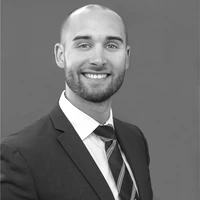Question
How are emerging technologies transforming hearing healthcare and patient outcomes?
Answer
In hearing healthcare, innovation isn’t always about inventing something entirely new.
Sometimes, it’s about rediscovering the tools we’ve had all along, and using them in new, smarter, more personalized ways. Take the wheel, for example. It’s been around for thousands of years, yet we continue to reinvent how we use it, from powering electric vehicles to taking flight across international skies. Similarly, audiological tools like real-ear measurements (REMs) and speech-in-noise tests have been with us for decades. But thanks to advancements in artificial intelligence (AI) and connectivity, they’re now transforming how we care for patients.
Let’s start with speech-in-noise testing. Years ago, speech recognition in quiet was a standard component of the test battery clinicians used to help assess hearing aid candidacy. It was an important piece of the puzzle, though never the only one. We were focused on finding asymmetries, detecting retro-cochlear pathologies, and determining which ear to fit for amplification. In fact, back in 1983, over 80% of hearing aids were fitted monaurally, while more than 80% are fitted binaurally today.1 In today’s world, where background noise is a near-constant challenge like restaurants, meetings, or classrooms, binaural amplification is essential to achieve optimal results, and the old ways of measuring speech recognition (in quiet) no longer define best practice; rather, speech-in-noise testing offers far more relevant insight. Tests like the QuickSIN, HINT, and WIN allow clinicians to evaluate real-world listening challenges and better match features like directional microphones and noise management to each patient’s unique listening landscape.
These tests don’t just help with hearing aid programming. They become powerful tools for education, especially when a patient’s loved one witnesses the difference between unaided and aided performance in real-time. It’s an “aha” moment that builds trust, motivates action, and illustrates how modern technology, when implemented by a hearing care professional, leads to the best outcomes for patients. Furthermore, they may assist in the selection of accessories (e.g., remote and/or beamforming microphones) and adjustment of features (e.g., directional microphones, noise management) used with state-of-the-art amplification.
Personalization Through Measurement
REMs have similarly evolved. Once seen as time-consuming, they’ve now become faster and more intuitive with the help of AI. AutoREM systems, in conjunction with Starkey’s Pro Fit fitting software, can run multiple speech inputs (50, 65, and 80 dB) and automatically match to prescriptive targets in less time than manual fine-tuning is used. Furthermore, REM isn’t just about “hitting targets.” It’s about maximizing the patient’s residual hearing and ensuring speech sounds are both audible and comfortable. It’s a tool that, when used thoughtfully, is central to a patient-centered care model that comprises clinical expertise and personalized results that consider the entire patient, rather than simply a “pair of ears”.
With personalization as a guiding principle, we can’t ignore the power of outcome measures. Tools like the Abbreviated Profile of Hearing Aid Benefit (APHAB) and the Client Oriented Scale of Improvement (COSI) help both clinician and patient track progress beyond the audiogram. These tools don’t just report statistically significant changes; they offer insights into the patient’s perceived difficulty and satisfaction across everyday environments. They also open the door to motivational interviewing, asking the patient what they hope to gain, what concerns they have, and how technology might help them re-engage with the people and places they value most.
In the words of the Greek philosopher Epictetus: “We have two ears and one mouth so we can listen twice as much as we speak.” That’s not just poetic, it’s practical in today’s day and age. Listening to patients informs better fitting strategies, better outcomes, and better care. The result? Satisfied (dare we say “delighted?”) patients that experience optimal speech understanding and intelligibility in simple and complex listening situations.
Artificial Intelligence: Innovation in Action
In 2018, Starkey became the first hearing aid manufacturer to incorporate AI into hearing aid technology, marking a shift in how we think about the role of hearing devices. With the introduction of Edge Mode in 2020, and concomitant development of deep neural networks (DNN), our technology delivers best-in-class sound quality while also offering features that support cognitive health, balance, and overall health and wellness. We believe technology should serve a greater purpose. That’s why we focus on creating hearing solutions that help people stay connected to what matters most: their relationships, their communities, and their sense of self. We've incorporated groundbreaking AI to transform our hearing aids into more than just devices that help patients hear, listen, and understand speech with increased clarity. They're becoming personal assistants, much like Jarvis from Ironman. Imagine a world where your hearing aid offers you instant translation in 72 languages or helps monitor your health through integrated sensors. That's the future Starkey is building.
Starkey Edge AI hearing aids, for example, utilize inertial measurement units (IMUs) to monitor physical activity, assess gait and balance, and even detect falls.2 Partnering with Stanford University and using CDC’s STEADI protocol, we developed balance risk assessments patients can complete in the comfort of their home. This isn’t just detecting a fall; it’s fall prevention. Campos et. al. report adults with hearing loss face more than double the risk of falling compared to those with normal hearing. Interestingly, consistent hearing aid use, defined as wearing them for four or more hours a day over the span of a year, was associated with a 50% reduction in fall risk.3
“The reason why my gratitude towards @starkeyhearing needed to take center stage today. Earlier today, my sister and I received a notification: “Fall Alert from Barry!” Thankfully, he’s okay. His Starkey hearing aids detected a possible fall & instantly alerted us with his location. Knowing this feature works gives us immense peace of mind. It’s more than just hearing support; it’s a safety net for our family. Starkey, thank you for creating technology that truly does care.”
– Dr. Melissa Heche, New York Speech & Hearing/NY Sound & Hearing
Our technology tracks steps, motion, and social interaction. Why? Because we understand the comorbidities linked to hearing loss, which include but are not limited to cardiovascular disease, cognitive decline, and depression. Today’s hearing aids are doing more than amplifying sound, they’re helping people stay active, remain connected with family and friends, and live healthier lives. We are developing caring technologies that not only enhance hearing but also provide support, guidance, and a better quality of life. Modern hearing technology has evolved into a multifaceted healthcare tool. In addition to delivering high-quality sound, these devices can provide medication reminders, track wellness metrics, and assist in identifying early indicators of broader health concerns.
One of the most meaningful advancements in hearing technology is how hearing aids are now doubling as personal assistants, helping patients stay connected to their loved ones and engaged in everyday life. Voice commands, Bluetooth® Low Energy (LE) Audio, and Auracast™ compatible features enable patients to wirelessly stream high-quality audio in public spaces, including airports, theaters, sports bars, places of worship, or lecture halls. This is life-changing, not just for the tech-savvy younger generation but for older adults who want simplicity and ease of use. Through AI, patients can now interact with their hearing aids in a more natural, intuitive way. And with seamless smartphone connectivity, they can manage their hearing experience without needing to fumble with tiny buttons or switches, improving accessibility for users of all abilities.
Redefining the Role of the Hearing Care Professional
With all these innovations, the hearing care professional is no longer just a “fitter.” We are data analysts, educators, counselors, and wellness guides. Personalization isn’t just about programming, it’s about understanding the patient’s ecosystem: where they live, how they communicate, what their typical day looks like, and what their hearing, listening and communication goals are. Emerging technologies help us get there faster, but the human connection, our ability to listen, guide, and care, is still the foundation of everything we do.
While the fear of AI replacing human jobs seems to be dominating headlines and news stories globally, let’s rewind to the year 2000 when the da Vinci Surgical System was introduced. The initial fears and skepticism discussed amongst professionals and patients were loss of human touch, training and safety, cost and accessibility, and probably the most popular, “A robot performing surgery? Absolutely not!” The thought of a fully autonomous robot performing surgery without being attended to by a clinically trained professional with years of experience is terrifying. However, over time, there was a shift in perception. Surgeon-led patient education and hospital systems who adopted the technology educated their communities, correcting misconceptions, discussing the benefits, and building trust. The system's outcomes include smaller incisions, less blood loss, and increased patient satisfaction. In 2024, 2.6M surgical procedures were performed globally using the da Vinci Surgical System. Twenty-five years later, surgeons still guide this technology during procedures.4
As early adopters of technology that enhances the patient's experience and overall quality of life, the emerging technologies we discussed are not here to replace the hearing care professional. The technologies hearing care professionals use on a daily basis, like AutoREM, could be likened to robotic-assisted surgery. You’re still in the driver’s seat and can make adjustments based on your patient's subjective input. Hearing technology has come a long way indeed, but one thing hasn’t changed: our patients are still seeking connection. Whether it's to their spouse, their grandchildren, or their community, hearing well is a gateway to living well. By leveraging today’s emerging technologies, speech-in-noise testing, real-ear measurement, outcome tools, and AI, we can bridge the gap between hearing loss and meaningful communication. The future is personalized, connected, and profoundly human.
References:
- Strom, K. E. (2002). Will Baby-Boomers Save a Flat Hearing Aid Market? The Hearing Review, 9(6), 14–32. Retrieved from https://hearingreview.com/practice-building/marketing/will-baby-boomers-save-a-flat-hearing-aid-market
- Steenerson, K. K., Griswold, B., Keating, D. P., 3rd, Srour, M., Burwinkel, J. R., Isanhart, E., Ma, Y., Fabry, D. A., Bhowmik, A. K., Jackler, R. K., & Fitzgerald, M. B. (2025). Use of Hearing Aids Embedded with Inertial Sensors and Artificial Intelligence to Identify Patients at Risk for Falling. Otology & neurotology: official publication of the American Otological Society, American Neurotology Society [and] European Academy of Otology and Neurotology, 46(2), 121–127. https://doi.org/10.1097/MAO.0000000000004386
- Campos, L., Prochazka, A., Anderson, M., Kaizer, A., Foster, C., & Hullar, T. (2023). Consistent hearing aid use is associated with lower fall prevalence and risk in older adults with hearing loss. Journal of the American Geriatrics Society, 71(10), 3163–3171. https://doi.org/10.1111/jgs.18461
- Dey, M. (2025, January 28). Surgical robotics statistics and facts. Electro IQ. https://electroiq.com/stats/surgical-robotics-statistics-and-facts/
Resources for More Information
For more information about Inventis, visit https://www.inventis.it/en-na



